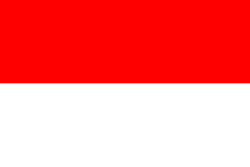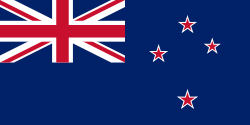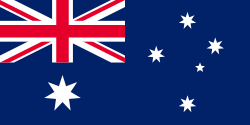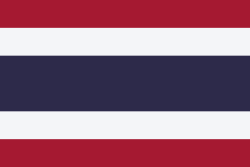Kim So-jung (Tennisspielerin)
| Kim So-jung | |
| Nation: | |
| Geburtstag: | 18. März 1986 (37 Jahre) |
| Größe: | 171 cm |
| Gewicht: | 58 kg |
| 1. Profisaison: | 2002 |
| Rücktritt: | 2015 |
| Spielhand: | Rechts, beidhändige Rückhand |
| Preisgeld: | 120.411 US-Dollar |
| Einzel | |
| Karrierebilanz: | 251:178 |
| Karrieretitel: | 0 WTA, 5 ITF |
| Höchste Platzierung: | 204 (20. September 2010) |
| Doppel | |
| Karrierebilanz: | 140:127 |
| Karrieretitel: | 0 WTA, 8 ITF |
| Höchste Platzierung: | 233 (17. Juli 2006) |
| Quellen: offizielle Spielerprofile bei der ATP/WTA (siehe Weblinks) | |
Kim So-jung (koreanisch 김소영; * 18. März 1986 in Seoul) ist eine ehemalige südkoreanische Tennisspielerin.
Karriere
Kim begann mit zehn Jahren das Tennisspielen und bevorzugt Hartplätze. Sie gewann fünf Einzel- und acht Doppeltitel auf Turnieren des ITF Women’s Circuit.
2006 gewann sie bei den Asienspielen mit der südkoreanischen Mannschaft die Goldmedaille sowie bei den Asienspielen 2010 zusammen mit Lee Jin-a die Bronzemedaille im Damendoppel.
Von 2006 bis 2012 spielte sie in der südkoreanischen Fed-Cup-Mannschaft insgesamt 16 Matche in 13 Begegnungen bei einer Bilanz von je acht Siegen und Niederlagen. Sie konnte dabei drei von sieben Einzeln und fünf von neun Doppel gewinnen.
Turniersiege
Einzel
| Nr. | Datum | Turnier | Kategorie | Belag | Finalgegnerin | Ergebnis |
|---|---|---|---|---|---|---|
| 1. | 18. April 2004 | ITF $10.000 | Sand | 7:67, 6:2 | ||
| 2. | 1. Mai 2004 | ITF $10.000 | Hartplatz | 6:2, 6:2 | ||
| 3. | 6. November 2005 | ITF $50.000 | Hartplatz | 3:6, 6:1, 6:2 | ||
| 4. | 29. März 2009 | ITF $10.000 | Hartplatz | 4:6, 6:3, 7:5 | ||
| 5. | 17. April 2011 | ITF $25.000 | Hartplatz | 2:6, 6:3, 6:1 |
Doppel
| Nr. | Datum | Turnier | Kategorie | Belag | Partnerin | Finalgegnerinnen | Ergebnis |
|---|---|---|---|---|---|---|---|
| 1. | 10. September 2005 | ITF $50.000 | Hartplatz (Halle) | 6:4, 6:0 | |||
| 2. | 23. August 2008 | ITF $10.000 | Hartplatz | 2:6, 6:3, [10:4] | |||
| 3. | 14. März 2009 | ITF $10.000 | Hartplatz | 7:5, 7:64 | |||
| 4. | 21. März 2009 | ITF $10.000 | Hartplatz | 7:5, 6:3 | |||
| 5. | 28. März 2009 | ITF $10.000 | Hartplatz | 6:4, 6:4 | |||
| 6. | 21. Juni 2014 | ITF $10.000 | Hartplatz | 6:3, 6:1 | |||
| 7. | 28. Juni 2014 | ITF $10.000 | Hartplatz | 7:5, 2:6, [11:9] | |||
| 8. | 29. August 2015 | ITF $10.000 | Hartplatz | 6:4, 6:71, [10:8] |
Weblinks
- Billie-Jean-King-Cup-Statistik von Kim So-jung (englisch)
- WTA-Profil von Kim So-jung (englisch)
- ITF-Profil von Kim So-jung (englisch)
- ITF-Junioren-Profil von Kim So-jung (englisch)
| Personendaten | |
|---|---|
| NAME | Kim, So-jung |
| ALTERNATIVNAMEN | 김소영 (koreanisch) |
| KURZBESCHREIBUNG | südkoreanische Tennisspielerin |
| GEBURTSDATUM | 18. März 1986 |
| GEBURTSORT | Seoul, Südkorea |
Auf dieser Seite verwendete Medien
Pictograms of Olympic sports - Tennis. This is unofficial sample picture. Images of official Olympic pictograms for 1948 Summer Olympics and all Summer Olympics since 1964 can be found in corresponding Official Reports.
Chinese Taipei Olympic Flag. According to the official website of Chinese Taipei Olympic Committee, Blue Sky(circle) & White Sun(triangles) above the Olympic rings is neither the National Emblem of the Republic of China, nor the Party Emblem of Kuomintang (KMT), but a design in between, where the triangles do not extend to the edge of the blue circle, as registered at International Olympic Committee in 1981 and digitally rendered in 2013. Besides, the blue outline of the five-petaled plum blossom is broader than the red one. Moreover, the CMYK code of the blue one and the Blue Sky & White Sun is "C100-M100-Y0-K0", and different from the Olympic rings (C100-M25-Y0-K0). Note that it's the only version recognized by IOC.
bendera Indonesia
Flag of Australia, when congruence with this colour chart is required (i.e. when a "less bright" version is needed).
See Flag of Australia.svg for main file information.The Korean characters "한국어, 조선말" meaning Korean, made using the GungsuhChe truetype font










